
guida’s menu
The GUIDAS Menu is a tailored system designed to enhance user experience through structured options․ It simplifies decision-making by organizing choices logically, ensuring efficiency and satisfaction․ This menu system is customizable, meeting diverse needs while maintaining clarity and accessibility for all users․

1․1 What is GUIDAS Menu?
The GUIDAS Menu is a sophisticated system designed to provide users with a clear and organized way to navigate through various options․ It is typically used in digital interfaces, such as restaurant menus, application settings, or interactive platforms, to enhance user experience․ The system is built around the concept of guiding users seamlessly through choices, ensuring that they can easily find what they are looking for․
At its core, the GUIDAS Menu is a tool that simplifies decision-making by categorizing options into logical groups․ It often incorporates visual cues, such as icons, headings, and subheadings, to make the selection process intuitive․ Whether it’s a food menu highlighting popular dishes or a software menu organizing features, the GUIDAS Menu is designed to reduce confusion and improve efficiency․
One of the key features of the GUIDAS Menu is its adaptability․ It can be customized to fit different contexts, from fine dining establishments to tech applications․ By prioritizing user-friendly design, the GUIDAS Menu ensures that individuals can quickly and effortlessly make informed decisions․ This makes it a valuable asset for businesses and developers aiming to enhance user satisfaction and engagement․
1․2 Importance of a Well-Structured Menu
A well-structured menu is essential for delivering a seamless and enjoyable user experience․ It serves as the backbone of any interface, guiding users through options in a logical and intuitive manner․ A poorly designed menu can lead to confusion, frustration, and even abandonment, while a well-organized one enhances satisfaction and efficiency․
One of the primary reasons for a structured menu is to improve decision-making․ By categorizing options clearly, users can quickly locate what they need without feeling overwhelmed․ This is particularly crucial in environments like restaurants, where a cluttered menu can deter customers, or in software applications, where complexity can hinder productivity․
A well-structured menu also plays a significant role in branding and user engagement․ It reflects the identity of the establishment or platform, creating a cohesive experience․ Additionally, it helps in highlighting key offerings, such as popular dishes or essential features, driving sales and user interaction․ Ultimately, a thoughtfully designed menu is not just a tool for navigation—it’s a strategic asset that enhances overall satisfaction and success․
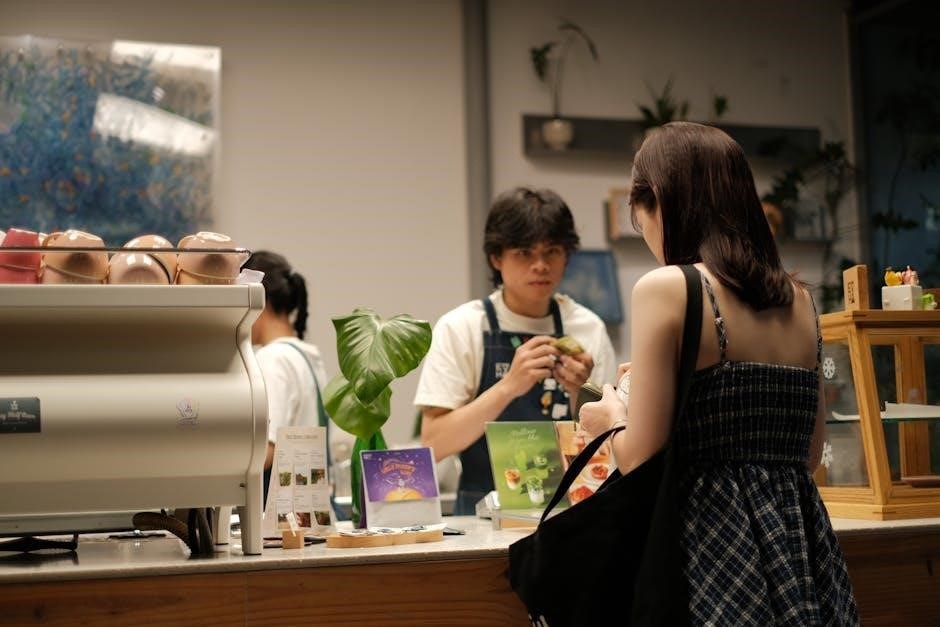
Understanding the Basics of Menu Planning
Menu planning involves defining the purpose, target audience, and objectives․ It requires balancing variety, nutritional value, and customer preferences while ensuring offerings align with the brand’s identity․ A well-planned menu is foundational for satisfaction and operational efficiency․
2․1 Key Principles of Menu Design
Effective menu design revolves around clarity, readability, and visual appeal․ It begins with a clear hierarchy, ensuring easy navigation for customers․ Menus should be concise, avoiding overwhelming choices while offering variety․ The use of high-quality images and typography enhances attractiveness, guiding customers’ attention to key items․ Color schemes and layouts should align with the brand’s identity, creating a cohesive experience․ Placement of popular or profitable items in visually prominent spots, like the top or center, can influence sales․ Language and descriptions should be engaging yet straightforward, avoiding jargon․ Seasonal or special items should be highlighted to create urgency․ Digital menus benefit from interactive elements, such as search bars or filtering options, improving user convenience․ Consistency across all platforms ensures a seamless experience, whether physical or digital․ Regular testing and feedback loops help refine the design, ensuring it meets customer preferences and business goals․ Ultimately, a well-designed menu balances aesthetics and functionality, enhancing both customer satisfaction and operational efficiency․
2․2 Factors Influencing Menu Choices
Menu choices are influenced by a variety of factors, including personal preferences, dietary restrictions, and cultural background․ Pricing strategies also play a significant role, as customers often balance cost with perceived value․ The presentation and description of dishes can sway decisions, with appealing imagery and descriptive language enhancing attractiveness․ Seasonal availability of ingredients and trends in cuisine further shape menu selections․ Health-conscious options are increasingly important, as consumers prioritize nutrition and wellness․ The layout and organization of the menu itself, such as the placement of high-margin items, can subtly guide choices․ Additionally, technological integration, like digital menus, allows for real-time customization and personalized recommendations, enhancing the decision-making process․ Understanding these factors enables the creation of menus that align with customer preferences and business objectives, ensuring a satisfying and profitable dining experience․

Menu Psychology and Customer Behavior
Menu psychology explores how design and layout influence customer choices․ Strategic placement of high-profit items and appealing descriptions can drive sales․ Understanding consumer behavior helps create menus that attract attention, simplify decisions, and enhance overall dining experiences, aligning with customer preferences and expectations․
3․1 Understanding Consumer Preferences
Understanding consumer preferences is crucial for designing a menu that resonates with customers․ Modern diners are increasingly health-conscious, seeking options that cater to dietary restrictions like gluten-free, vegan, or low-carb meals․ Additionally, visual appeal and descriptive language play significant roles in decision-making․
Research shows that consumers are drawn to menu items that emphasize freshness, sustainability, and quality․ They also appreciate transparency, such as calorie counts or ingredient sourcing information․ Moreover, cultural and regional preferences heavily influence menu choices, making it essential to tailor offerings to the target audience․
Psychological factors, such as nostalgia or indulgence, also drive selections․ For instance, comfort foods or seasonal specials often attract customers looking for familiarity or novelty․ By analyzing these preferences, restaurants can craft menus that not only satisfy cravings but also align with evolving trends and expectations․ Ultimately, understanding consumer preferences allows for a more personalized and engaging dining experience․
3․2 The Role of Menu Layout in Decision-Making
The layout of a menu plays a pivotal role in influencing customer decision-making․ A well-organized design guides the customer’s eye, ensuring that key items stand out and are easily accessible․ Strategic placement of high-margin dishes or popular items in prominent areas, such as the top-left or center, can significantly boost sales․
Visual hierarchy is a critical component of effective menu design․ The use of bold text, images, and whitespace helps draw attention to specific offerings․ For example, highlighting seasonal specials or limited-time deals can create a sense of urgency and encourage impulse purchases․ Additionally, grouping similar items together simplifies the decision-making process, reducing cognitive overload for customers․
Psychological studies reveal that customers tend to spend more time viewing the top third of a menu, making this prime real estate for profitable items․ Furthermore, the inclusion of high-quality images can enhance appeal, particularly for visually driven consumers․ By balancing aesthetics with functionality, a thoughtfully designed menu layout can enhance the overall dining experience and drive business success․
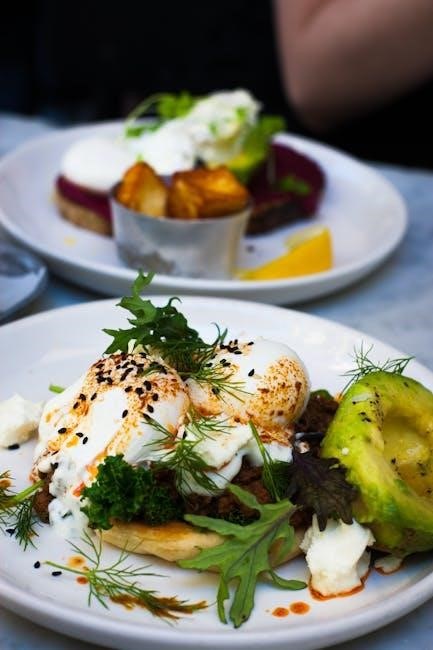
Digital Menus and Technology Integration
Digital menus enhance customer experience through interactive features and real-time updates․ Integration with mobile apps and online ordering systems streamlines operations, improving efficiency and customer satisfaction․ Technology-driven solutions modernize traditional menus, offering dynamic and personalized dining experiences for users․
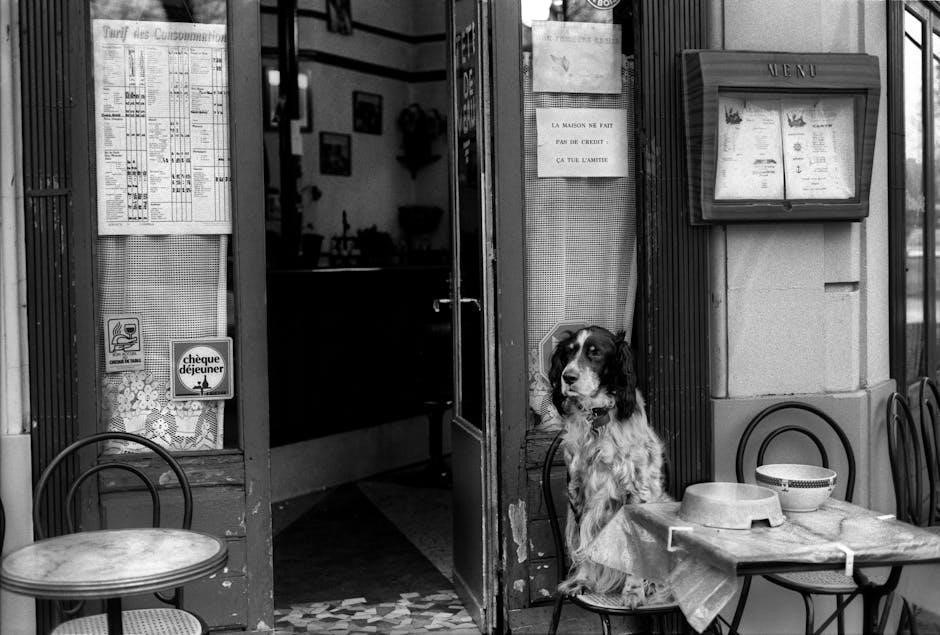
4․1 The Rise of Digital Menu Boards
Digital menu boards have revolutionized the way restaurants and eateries present their offerings․ These dynamic displays use high-quality images, videos, and animations to showcase menu items, making them more appealing to customers․ With the ability to update content in real-time, digital menu boards offer flexibility and efficiency․ Restaurants can easily change prices, highlight specials, or promote new items without the need for physical reprinting․ This technology also allows for dayparting, where menus can be adjusted based on the time of day or customer demand․
The rise of digital menu boards is driven by their ability to enhance customer experience․ They provide clear and engaging visuals, reducing confusion and making decision-making easier․ Additionally, digital menus can incorporate nutritional information, allergy alerts, and sustainability details, catering to health-conscious and eco-aware consumers․ Many systems integrate with point-of-sale (POS) systems, enabling seamless updates and data-driven insights․ As technology advances, digital menu boards are becoming more interactive, offering features like touchscreens and personalized recommendations based on customer preferences․
This shift not only modernizes the dining experience but also supports operational efficiency, making it a key trend in the evolution of menu systems․
4․2 Mobile Apps and Online Ordering Systems
Mobile apps and online ordering systems have transformed how customers interact with menus, offering unparalleled convenience and flexibility․ These platforms allow users to browse, customize, and place orders from their devices, reducing wait times and enhancing the overall dining experience․ Restaurants can leverage these systems to showcase their menus visually, provide detailed descriptions, and offer personalized recommendations based on customer preferences․
Key features of these systems include real-time order tracking, secure payment options, and loyalty program integration․ Customers appreciate the ability to save favorite items, access exclusive deals, and receive notifications about promotions; For businesses, mobile apps and online ordering systems streamline operations, reduce errors, and provide valuable insights into customer behavior and ordering patterns․
Moreover, these platforms enable restaurants to adapt to market trends, such as the growing demand for delivery and takeaway options․ By integrating with kitchen management systems, they ensure efficient order processing and timely fulfillment․ As technology advances, mobile apps and online ordering systems continue to play a vital role in enhancing customer satisfaction and driving business growth․
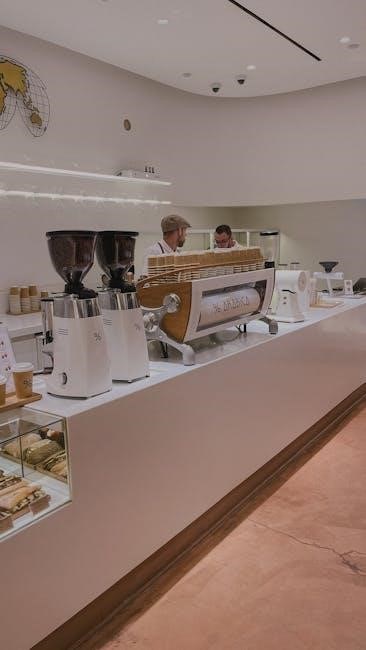
Menu Engineering and Profitability
Menu engineering focuses on analyzing item profitability and optimizing placement to maximize revenue․ By evaluating popularity and margins, restaurants can highlight high-profit dishes, enhancing overall menu performance and driving business success through strategic design and data-driven decisions․
5․1 Analyzing Menu Item Profitability
Analyzing menu item profitability is crucial for optimizing your menu’s financial performance․ This process involves evaluating each dish’s contribution margin, which is the profit after subtracting food and labor costs․ By categorizing items into high, medium, and low profitability groups, restaurants can identify their most lucrative offerings․ High-margin items should be prominently featured to encourage customer selection, while low-margin items may need repricing or removal․ Additionally, analyzing sales volume alongside profitability helps pinpoint underperforming dishes that may require reformulation or better marketing․ Tools like menu engineering matrices can visually map items based on popularity and profitability, aiding in data-driven decisions․ Regular reviews of menu item profitability ensure the menu remains aligned with financial goals and customer preferences․ This step is essential for maximizing revenue and maintaining a competitive edge in the market․ By leveraging data, restaurants can create menus that balance profitability with customer satisfaction, ensuring long-term success․ This analytical approach empowers businesses to make informed decisions and adapt to changing market demands effectively․
5․2 Strategies to Enhance Menu Performance
Enhancing menu performance involves a combination of strategic techniques to boost sales and customer satisfaction․ One effective strategy is menu engineering, which focuses on optimizing the placement and presentation of high-margin items․ By positioning profitable dishes in high-visibility areas, such as the top of the menu or in eye-catching boxes, restaurants can influence customer choices․ Additionally, descriptive menu labeling can enhance appeal, as detailed descriptions of ingredients and preparation methods can increase perceived value․ Pricing strategies, such as psychological pricing (e․g․, $9․99 instead of $10), can also encourage purchases․ Another key strategy is to balance menu length and complexity, ensuring it is neither too overwhelming nor too limited․ Seasonal updates and limited-time offers (LTOs) can create urgency and keep the menu fresh․ Furthermore, leveraging data analytics to identify popular and underperforming items allows for informed menu adjustments․ Training staff to upsell and cross-sell can further maximize revenue․ By implementing these strategies, restaurants can create a menu that drives profitability while satisfying diverse customer preferences․ Regular monitoring and adaptation ensure sustained performance and competitiveness in the market․
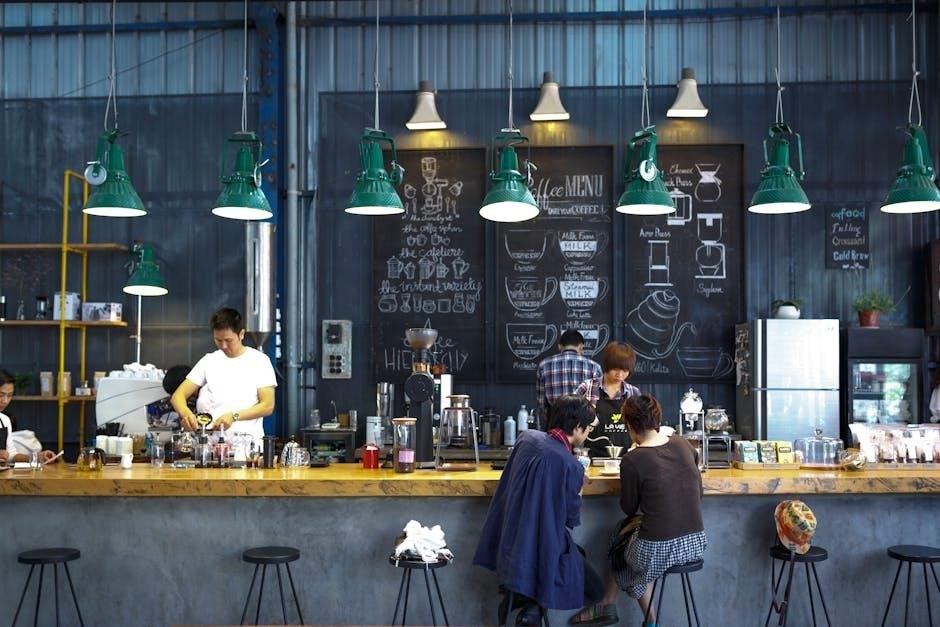
Seasonal and Special Menus
Seasonal menus highlight fresh, locally-sourced ingredients, aligning with current availability and consumer preferences․ Special menus cater to events or holidays, offering unique dishes that create excitement․ Both strategies enhance customer experience and drive engagement, ensuring variety and relevance throughout the year․
6․1 Creating Seasonal Menu Offerings
Creating seasonal menu offerings involves leveraging fresh, locally-sourced ingredients to craft dishes that align with specific times of the year․ This approach not only ensures flavor and quality but also resonates with customers seeking novel and timely dining experiences․ By incorporating seasonal produce, restaurants can reduce costs associated with importing out-of-season items and support local farmers, fostering sustainability․ Additionally, seasonal menus allow chefs to innovate and showcase creativity, keeping the menu dynamic and exciting for regular patrons․ Marketing these offerings effectively, such as through social media or special promotions, can attract new customers and build brand loyalty․ Regularly updating the menu with seasonal items also keeps the dining experience fresh and aligns with changing consumer preferences, making it a strategic tool for enhancing restaurant appeal and profitability throughout the year․
6․2 Designing Special Event Menus
Designing special event menus requires a tailored approach to meet the unique needs and themes of specific occasions, such as weddings, holidays, or corporate functions․ These menus are crafted to reflect the event’s atmosphere and cater to the preferences of the guests․ Collaboration with event planners and clients is essential to ensure the menu aligns with the overall vision․ Special event menus often feature customizable options, allowing guests to choose from a variety of dishes, including appetizers, main courses, and desserts․ Dietary restrictions and preferences, such as vegetarian or gluten-free options, must be considered to accommodate all attendees․ Presentation and plating play a crucial role in creating a memorable dining experience, as the visual appeal of the dishes enhances the event’s ambiance․ Additionally, incorporating seasonal or locally-sourced ingredients can elevate the menu’s quality and freshness․ Effective communication and organization are key to executing these menus seamlessly, ensuring that the culinary experience complements the event’s success and leaves a lasting impression on guests․

Menu Maintenance and Updates
Regular menu reviews ensure offerings stay relevant and appealing․ Updates adapt to market trends, seasonal changes, and customer preferences․ Maintaining accuracy and freshness is key to sustaining customer satisfaction and loyalty over time․
7․1 Regular Menu Reviews and Revisions
Regular menu reviews are essential for maintaining relevance and customer satisfaction․ These reviews involve analyzing menu item performance, gathering customer feedback, and assessing current trends․ Revisions may include updating descriptions, adjusting pricing, or removing underperforming items․ This process ensures the menu remains aligned with customer preferences and market demands, fostering loyalty and profitability․ By periodically evaluating and refining the menu, businesses can adapt to changing tastes and economic conditions, ensuring a competitive edge․ Regular updates also help in maintaining quality standards and consistency, which are crucial for building a strong brand reputation․ Through systematic reviews and thoughtful revisions, the menu evolves to meet the dynamic needs of customers and the market, ensuring long-term success․
7․2 Adapting to Market Trends and Preferences
Adapting to market trends and customer preferences is crucial for the long-term success of any menu․ As consumer tastes and dietary habits evolve, menus must be updated to reflect these changes․ For instance, the growing demand for plant-based, gluten-free, and sustainable options has led many restaurants to incorporate these items into their offerings․ By staying attuned to these shifts, the GUIDAS Menu can remain relevant and appealing to a broad audience․ Additionally, technological advancements, such as digital menus and QR codes, have become integral to modern dining experiences, allowing for real-time updates and personalized options․ Regularly reviewing market research and customer feedback ensures that the menu aligns with current preferences and expectations․ This proactive approach not only enhances customer satisfaction but also drives business growth․ By embracing flexibility and innovation, the GUIDAS Menu can seamlessly adapt to the ever-changing culinary landscape, ensuring it remains a favorite among diners for years to come․
The GUIDAS Menu serves as a comprehensive guide to crafting menus that balance aesthetics, functionality, and customer satisfaction․ By integrating design principles, psychological insights, and technological advancements, it ensures a seamless dining experience․ Regular updates and a customer-centric approach are key to its long-term success․
8․1 Summary of Key Points

8․2 Future Trends in Menu Development
The future of menu development, particularly within the GUIDAS Menu framework, is poised to evolve significantly․ Digital transformation will continue to dominate, with enhanced interactivity and personalized options becoming standard․ Mobile apps and online ordering systems will integrate seamlessly with menu designs, offering users real-time updates and tailored recommendations․ Additionally, the rise of voice-activated menus and augmented reality (AR) enhancements could redefine how customers interact with menu systems․ Sustainability will also play a pivotal role, with menus increasingly highlighting eco-friendly options and transparent sourcing․ Furthermore, data analytics will drive menu optimization, allowing businesses to refine offerings based on consumer preferences and trends․ The integration of artificial intelligence (AI) to predict demand and automate menu updates is another emerging trend․ Overall, the GUIDAS Menu will likely embrace these innovations to remain user-centric and forward-thinking, ensuring it adapts to the ever-changing landscape of technology and consumer expectations․ This dynamic approach will keep the GUIDAS Menu at the forefront of menu development in the years to come․